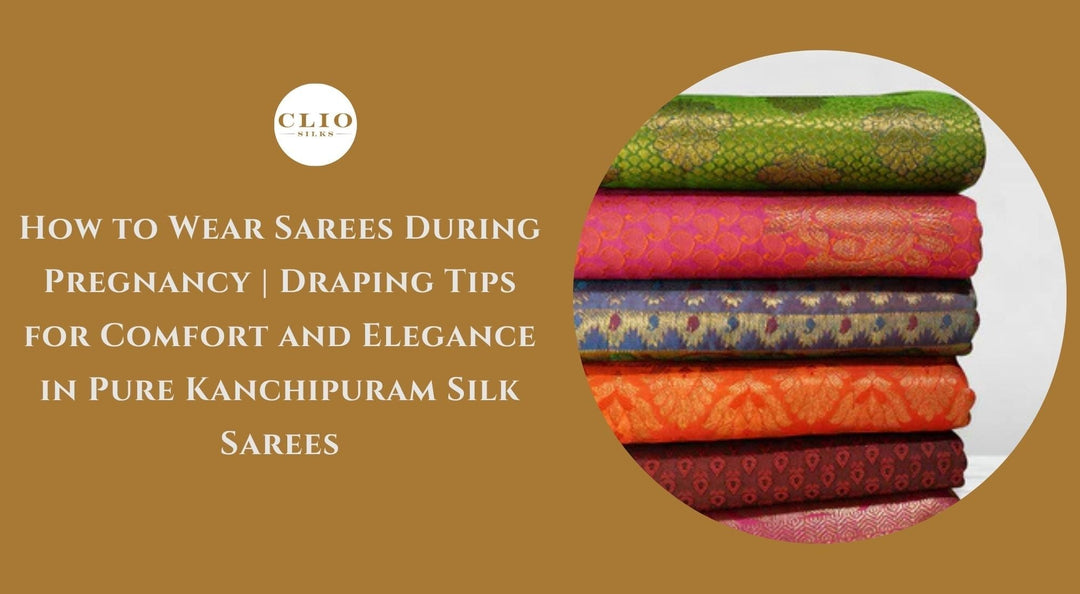Naturally Beautiful: What Are Organic Dyes in Kanchipuram Silks?
Kanchipuram silk sarees are more than just pieces of fabric. They are living legacies woven with stories of culture, tradition, and artistry. These sarees are cherished not only for their luxurious texture and grandeur but also for the precision and care that go into every detail from the threadwork to the dyes that bring them to life. In recent years, the shift toward organic dyes in Kanchipuram silks has sparked a growing interest among conscious consumers and traditionalists alike.
So, what exactly are organic dyes? How are they used in Kanchipuram silks? And why are they so important in today’s world? This blog takes a deep dive into the fascinating world of organic dyes and their role in the making of our treasured Kanchipuram silk sarees.
Understanding Organic Dyes: A Return to Roots
Organic dyes, also known as natural dyes, are colorants derived from nature typically from plant roots, leaves, bark, flowers, fruits, minerals, or even insects. These dyes were widely used in India for thousands of years before synthetic chemical dyes became popular in the 19th century.
In traditional textile hubs like Kanchipuram, natural dyes once formed the core of the coloring process. Today, with the increasing emphasis on sustainability and ethical fashion, organic dyes are making a powerful comeback.
Why Shift from Synthetic to Organic Dyes?
Modern synthetic dyes may offer a broad range of colors and quicker production cycles, but they come at a cost. They often contain harmful chemicals that can be damaging to both human skin and the environment. Rivers in many textile regions have turned toxic due to excessive dye effluents. Artisans who work with these dyes often suffer from respiratory issues, skin irritation, and other health problems.
Organic dyes, on the other hand, are:
-
Eco-friendly and biodegradable
-
Non-toxic to skin and lungs
-
Safe for artisans and their surroundings
-
Aesthetically appealing with their muted, earthy shades
The return to organic dyes isn’t just a fashion trend it’s a step toward responsible craftsmanship that respects both people and planet.
The Process: How Are Organic Dyes Used in Kanchipuram Silks?
Creating a Kanchipuram silk saree with organic dyes is a time-intensive, artisanal process that involves multiple steps and immense care. Here's a look at the traditional dyeing process:
1. Preparing the Yarn
Before dyeing, the pure mulberry silk yarn is thoroughly washed to remove natural oils and impurities. This ensures better dye absorption.
2. Mordanting
A mordant is a natural substance used to fix the dye to the fabric. Without it, the color may fade over time. In organic dyeing, artisans use plant-based mordants such as myrobalan (haritaki), alum, or pomegranate rind.
3. Creating the Dye Bath
This step is where nature takes center stage. Different plants and natural materials are used to prepare the dye bath:
-
Indigo leaves: for shades of deep blue
-
Madder root: for rich reds and pinks
-
Turmeric: for golden yellows
-
Pomegranate rind: for mustard tones
-
Henna and neem leaves: for shades of green
-
Cutch (Acacia wood extract): for browns and rusty hues
Each material is boiled, strained, and mixed in precise ratios to achieve the desired hue. The color can vary slightly depending on the climate, water pH, and even the season the plant was harvested giving every piece a truly one-of-a-kind finish.
4. Dyeing the Yarn
The silk yarn is dipped and soaked in the dye bath multiple times to achieve depth and vibrancy. After each dip, it is sun-dried naturally. Some colors may require over a week of repeated dyeing and drying for perfection.
5. Weaving the Saree
Once the yarn is dyed and dried, it is handed over to the master weavers of Kanchipuram, who weave it into intricate sarees with traditional motifs, temple borders, and rich pallus.
Colors with Character: The Unique Beauty of Organic Dyes
One of the most captivating qualities of organic dyes is their tonal variation and depth. Unlike synthetic dyes that give a flat, uniform finish, natural dyes offer:
-
Softer, richer shades
-
Slight irregularities that give a handmade, earthy character
-
A natural sheen that enhances the silk's texture
In fact, connoisseurs of Kanchipuram sarees often say that naturally dyed silks age gracefully the colors mellow beautifully over time, adding to the saree’s charm and heirloom value.

Sustainability in Every Thread
The use of organic dyes is a significant step toward sustainable saree-making. Here’s how they contribute to a greener planet:
Reduced Water Pollution
Natural dyeing doesn’t release harmful chemicals into the water, unlike synthetic dye factories that contaminate rivers.
Safer Working Conditions
Artisans who work with organic dyes are not exposed to toxins, which leads to better health and safety.
Preservation of Traditional Knowledge
Promoting organic dyeing techniques revives forgotten recipes, techniques, and practices that were passed down through generations.
Biodegradable Waste
Leftover dye materials can be composted or reused in organic farming nothing goes to waste.
Why Choose Organic-Dyed Kanchipuram Sarees?
If you’re someone who values not just beauty, but also ethical craftsmanship, here are some compelling reasons to invest in a saree dyed with organic colors:
-
Gentle on Skin: Ideal for those with sensitive skin or allergies.
-
Handcrafted with Care: Every color is born out of hours of manual effort.
-
Conscious Fashion Statement: You're making a choice that respects nature and artisan communities.
-
Timeless Appeal: Organic colors age like fine wine gracefully and uniquely.

Clio Silks: A Celebration of Conscious Craft
At Clio Silks, we believe that every saree should tell a story not just of beauty and tradition, but also of values. Our organic-dyed Kanchipuram silk collection is an ode to sustainable luxury. We work closely with skilled artisans who use age-old natural dyeing techniques to bring you sarees that are as kind to the earth as they are stunning to wear.
Whether you’re dressing for a wedding, a festival, or simply cherishing a family heirloom, an organic-dyed silk saree adds authenticity, grace, and soul to your ensemble.
Conclusion: A Heritage Woven in Harmony with Nature
The revival of organic dyes in Kanchipuram silks is more than a return to tradition it’s a forward-thinking step that blends beauty with sustainability. In a world flooded with fast fashion and synthetic materials, organic-dyed silk sarees remind us to slow down, value what’s handmade, and make choices that honor both craft and the planet.
Kanchipuram silks sarees | Pure Zari kanchipuram silk sarees | Brocade Kanjivaram silk sarees | Traditional kanchipuram silk sarees | Borderless Kanjivaram silk sarees | Classic kanjivaram silk sarees | Banaras silks | Soft silk sarees | Checked Kanjivaram silk sarees | Silk mark certified sarees | Ikat Sarees | Wedding Kanchipuram Silk Sarees | Soft silk sarees | Raw Silk Sarees | Gadwal Silk Sarees






Leave a comment